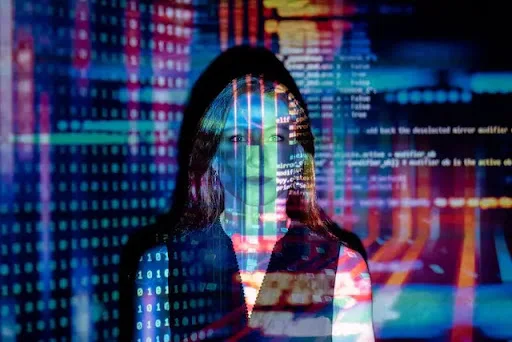Deepfakes: Pros and Challenges
Deepfakes are digital videos or images that have been manipulated using advanced artificial intelligence algorithms to superimpose a person’s face and voice onto another person’s body or speech. The technology behind deepfakes is rapidly evolving, making it easier for anyone to create high-quality fake videos.
Pros of Deepfake Technology
Deepfake technology can have positive applications in various fields, such as:
● Education: Deepfake technology can be used to make education more entertaining and engaging. For example, we can create videos with historical figures explaining their lives and achievements. This can help students learn and remember things better.
● Entertainment: Deepfake technology can enhance the movie experience by using realistic special effects and creating characters that do not exist. For example, the Disney+ documentary Get Back used deepfake technology to restore and colorize footage of The Beatles.
● Privacy: Deepfake technology can help people who want to protect their identity or privacy online. For example, whistleblowers can use deepfake technology to reveal information without exposing their real identity.
● Emotion: Deepfake technology can help people emotionally by allowing them to communicate with their loved ones in their own voice or see them again after they have passed away. For example, if someone lost their voice due to a disease or accident, they can still talk to their family and friends using deepfake technology.
Challenges of Deepfake Technology
Deepfake technology also poses serious challenges and risks for society, such as:
● Misinformation: One of the biggest issues with deepfakes is that they can be used to spread false information and manipulate public opinion. For example, a deepfake video could be used to spread false rumors or to influence people into believing that a political figure has said or done something that they never actually did. This can undermine trust and democracy and create conflicts and violence.
● Defamation: Deepfake technology can be used to defame or harass individuals by creating fake videos that show them in a negative or compromising light. For example, a deepfake video could be used to show that a person is committing a crime or cheating on their partner. This can damage their reputation and cause emotional distress.
● Verification: Deepfake technology makes it harder to verify the authenticity of any video or image online. Even if we could tell whether someone’s image was real or not before viewing a video, it is still impossible for anyone who didn’t know the person personally. This can create confusion and doubt and make it difficult to distinguish between fact and fiction.
Deepfake technology is here to stay and we need to find ways to deal with its pros and cons. Some possible solutions are:
● Regulation: There is a need for clear laws and regulations to prevent the misuse of deepfake technology and to protect the rights and privacy of individuals. For example, Taiwan has amended its election laws to punish people who create or share deepfake videos. In India, there are some existing laws that can be used to punish defamation or obscenity caused by deepfake technology, but there is a need for a separate law to regulate this new technology.
● Awareness: There is a need for awareness programs to educate the public about the dangers of deepfake technology and its ability to create chaos in society. People should be taught how to spot and report deepfake videos and how to verify the source and credibility of any information online.
● Technology: There is a need for more research and innovation in developing technologies that can detect and counter deepfake videos. For example, some companies are working on creating digital watermarks or signatures that can verify the authenticity of videos or images. Some platforms are also using AI tools to flag or remove deepfake content from their sites.
Deepfake technology is a double-edged sword that can be used for good or evil. We need to be aware of its potential benefits and challenges and find ways to use it responsibly and ethically.









